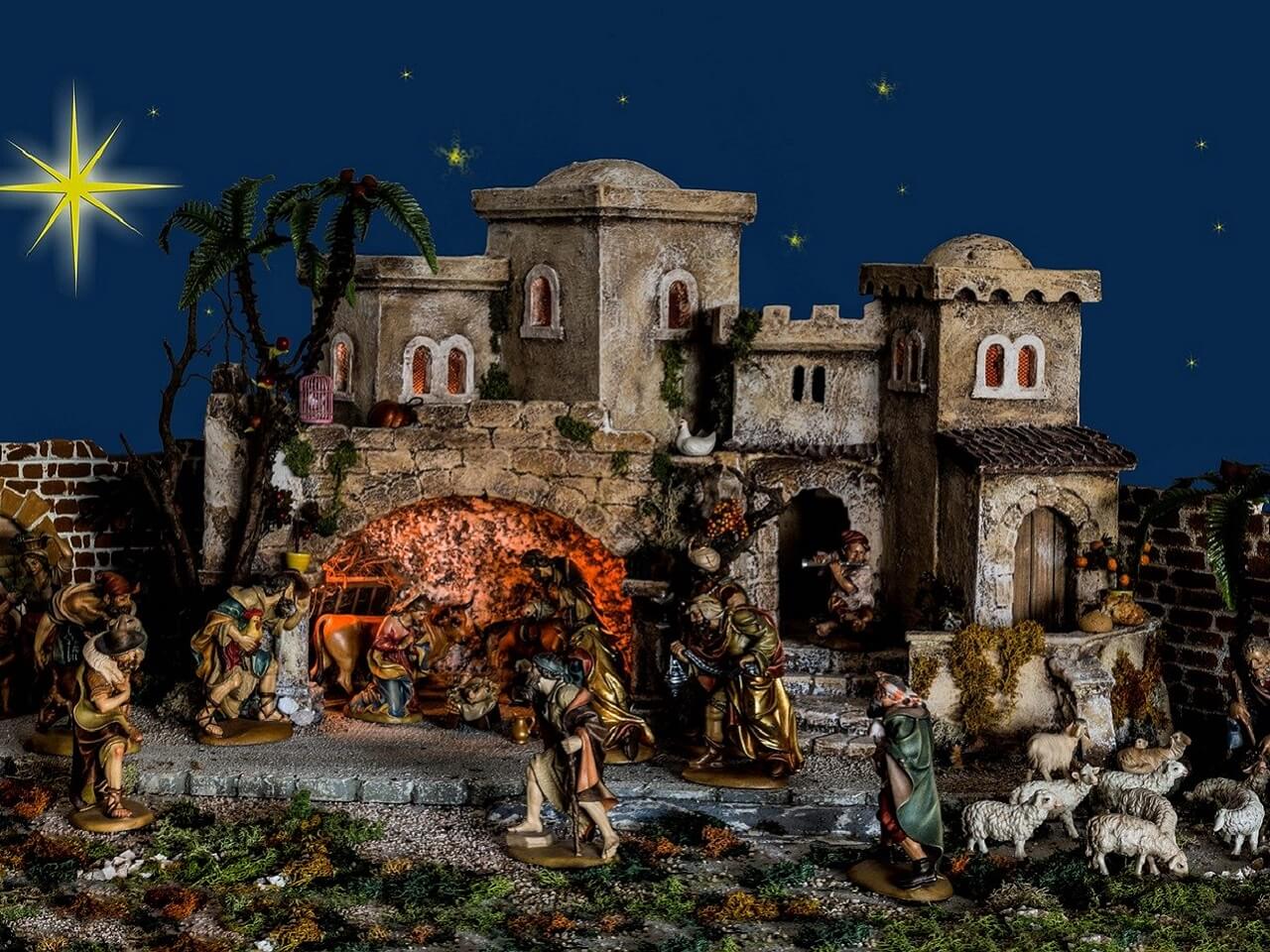In these times of “politically correct” religious and moral bewilderment, in which Christmas carols are purged of Christian references, when they are not replaced with other songs, times in which Nativity scenes are rejected in the name of a misunderstood religious neutrality and a misrepresented secularity, the call, found in the pope’s recent apostolic letter Admirabile Signum, “to encourage the beautiful family tradition of preparing the nativity scene in the days before Christmas, but also the custom of setting it up in the workplace, in schools, hospitals, prisons and town squares” (n. 1) can only warm the heart.
The Lauda per la Natività del Signore by Ottorino Respighi (1879–1936), a small-scale Christmas cantata completed in 1930 for three soloists, chorus, and instrumental ensemble, is particularly suited to contemplating the manger. This work, divided into four sections and a coda (a concluding section) without separate movements, is composed for a soprano (the angel), a mezzo-soprano (Mary), a tenor (a Shepherd), a mixed chorus (of angels and shepherds), and a small instrumental ensemble (two flutes, an oboe, an English horn, two bassoons, a triangle, and a piano four hands). The text, a mixture of Italian, partly also with dialectal influences, and Latin, is a smaller portion of the 47 stanzas of the Lauda pro nativitate Domini, ascribed to the Franciscan poet Jacopone da Todi (ca. 1230–1306).
The oboe, followed first by the English horn and then by the other woodwinds, begins a soft dirge, leitmotiv of the cantata, which already ushers us into the great Mystery of the Incarnation. The angel, then, announces with great joy to the shepherds, who watch their flocks as they graze in that region, that little Jesus has been born the Son of God, the Savior.
The angelic chorus follows, helping the shepherds to sense the Messiah’s coming: a “lowly stable”; a poor, defenseless babe who lies “between the ox and the ass”; “his mother, simply clad,” bent over the manger. At the end of the first section of the Lauda, the angel and the choir of angels repeat their interventions intertwining.
Through an instrumental interlude, we go to the shepherds’ section. At first, only one of them expresses to the Lord, descended from Heaven to Earth according to the angel’s words, the burning desire to find him “in such a lowly stable,” that they might see him “clothed in mortal flesh.” Then all the shepherds, having reached the holy grotto, find what was announced by the angels: “the poor Babe lying; the blessed Virgin does not have food nor clothes in which to wrap him, Joseph is of little help as he is old and feeble”; and a Lord who “has nothing.”
Here is Mary, supported by the English horn, contemplating her child, born in poverty, while the old guardian Joseph “has fallen asleep.” Her son is “the perfect joy,” the presence who gives “eternal joy.” Even the shepherds’ choir is fondly addressing that fountain of bounty who “so humbly” has offered himself.
Then, a dialogue between Mary and the shepherds comes, in which the angels’ choir is inserted. Mary recognizes in the son born “in such poverty the Infinite God who for humanity is now flesh incarnate” and reassures the “poor little Child,” the promise of the heavenly Father, to wrap Him in her dress. The shepherds offer their cloaks to the holy Mother, even if they are ragged from the work in the fields with the flocks, and invite her to wrap “the little Child that His pure flesh not smell of hay.” The angels sing “glory, praise, and honor” to the omnipotent Lord of Heaven.
The shepherds, who according to the Gospel cognoverunt de verbo, knew that the word was true, now in a beautiful choral episode invoke the one who “has deigned to be born today in great poverty” to enlighten the humanity so that everyone can appreciate such a gift.
After an instrumental moment in which adoration continues, the shepherds humbly ask Mary to touch the child for a moment, before departing contented. Mary is willing to comfort them, that they may return in joy to their flocks, “for it is now determined that the Servant will be redeemed.”
It’s precisely on Mary’s words that a song of glory begins (Gloria in excelsis Deo), and the pastoral atmosphere gives way to a song of exultation, supported by piano and triangle, which are added to the woodwinds in a solemn baroque counterpoint. Then, in a more relaxed episode, the shepherds, glorifying His majesty, praise the One who “to an evil world” has presented himself not as His duty, but as His pleasure.
And we reach the coda of this Lauda, in which Mary, singing ecstatically on a single note, proclaims herself mother of a son “who is the Eternal God.” “Such is the divine joy” as she cradles and kisses “the dear child, more beautiful than any lily,” that her heart is swelling and she feels “a new delight.”
Before the final Amen, the angel raises his voice to reiterate the initial announcement of the Savior’s birth.


